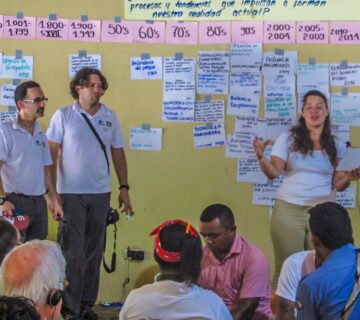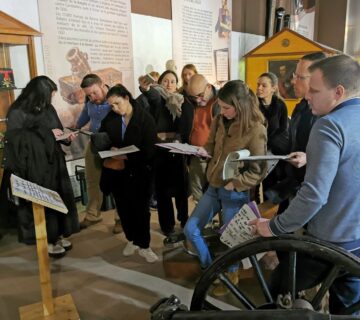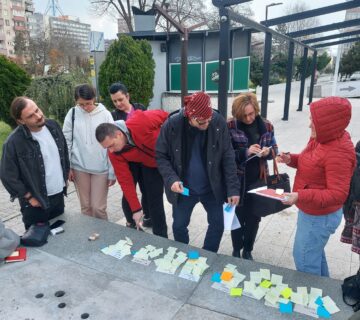In October, the European Historic Houses Association gathered in Brussels for its annual conference. The title, Education, Training and Innovation for better management of Historic Buildings, set some high expectations.
While management of historic buildings usually talks of conservation methods and restoration projects, the title of this year’s conference of the EAHH promised something else. And promises were kept! I went home remembering especially elements from the keynote address, given by Martine Reicherts, Director-General for Education and Culture at the EU Commission. She gave the participants more than enough to think about. Ms. Reicherts launched a call to prepare ourselves, as owners or managers of historic houses, for 2018 – the European Year of Cultural Heritage (EYCH). To make the year worthwhile we need another mind-set, she said. If we want to give our heritage a future, we need to involve more young people. Open the doors as wide as we can to let them in, and let them think along. The EYCH is an opportunity to show how we can do this differently. To share initiatives that are really happening and not just preaching about it. Don’t be afraid to let the youth on board. Youth movements all over Europe are in charge in very different domains. It is this army of young people that can make a difference. It is important to recognise that youth uses the public domain differently; there is a shift from ‘ownership’ towards ‘sharing’. Think about AirBnB and the system of city bikes in different cities all over Europe. Maybe we can find ways, also in historic houses, to let young people make this shift. We have to learn to look at our historic sites differently, and not be afraid to let young people take charge.
As a speaker on the panel discussion on Education and training initiatives, I was very happy to support the message Ms. Reicherts tried to convey. As manager of Audience Development for Herita, I am very fortunate to develop programs for different audiences in our heritage sites. Three years ago, we started in one of our sites by renewing the offering for families. Some people asked me why we started by focusing on children. Children will damage the place. Children are loud, they will disturb other visitors. We don’t want to be an amusement park for heritage. So I asked the members of the EAHH, and you for that matter, how can we make sure that not only we, as people with a heart for heritage, love these beautiful sites we live and work in? How can we make sure that the children of today are the heritage-carers of tomorrow?
Studies have shown that it is of crucial importance to reach people at a young age if you want them to love something. But how do you do that? How do you reach young people without losing sight of the story you want to tell? How do we avoid becoming a Heritage Disneyland but still offer something that children and families will enjoy?
My advice? Ask them. Ask the target groups you are aiming at what they like, what they need.
My second piece of advice: ask yourself. What do you need? What are your concerns and hopes? Your goals and expectations? Your fears? Lay them out and make them as specific as possible. Ask yourself also what your heritage site needs. What are its limitations? What do your co-workers, employees, partners need? Ask them. Look for all the input you can get. And then, find the common ground in these needs.
And how do we make sure people not only enjoy our heritage site, but learn something? How can we make them remember the heritage value that’s so crucial? Recommendation number three: Make it visible and make choices. Make visible what makes your site unique. Which unique stories and features make your house or site special? Why should people come to your castle and not to any other castle? It’s not always about princesses and dragons. But that doesn’t have to be a bad thing. Make choices in the messages you want to convey. What can’t you see or experience anywhere else? What is the story of your specific site? Talk about it, define it, shape it, choose.
And finally, the last piece of advice: involve others. Look around you. You are probably not alone. Who can help you? Who is in the heritage community around your site and is willing to be involved? Talk to employees, volunteers, neighbours, local authorities, schools around you, family communities. Don’t be afraid to give up a bit of the control. Since you’ve made clear before what your own needs, goals and limits are, as well as those of your heritage site, you’ll be able to let others in to work with you. You’ve set the framework.
Let your heritage community be involved, make the new offering their offering, and they’ll become the best ambassadors of your heritage site. And this is priceless. So, I would like to round up, by encouraging you to take the challenge and try to reach out to young audiences:
- Find the needs & wants – ask around
- Define the uniqueness and value of your heritage site
- Involve people around you – work together
Barbara Struys is responsible for Audience Development at Herita in Flanders. Barbara works on heritage interpretation and audience development in the sites Run by Herita, but also supports other heritage organisations in this matter. She can be contacted at: Barbara.struys@herita.be.
To cite this article:
Struys, B. (2016) ‘Dare to open the doors for young and old’. In Interpret Europe Newsletter 4-2016, 25
Available online:
https://www.interpret-europe.net/fileadmin/Documents/publications/Newsletters/ie-newsletter_2016-4_winter.pdf




